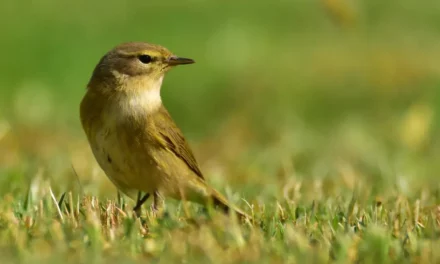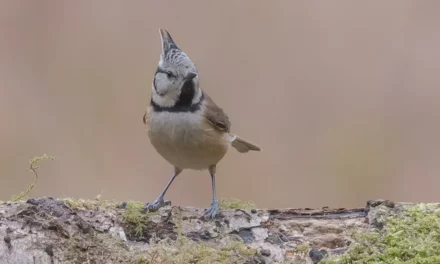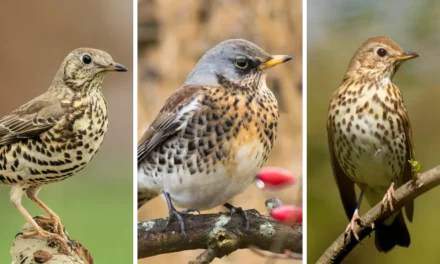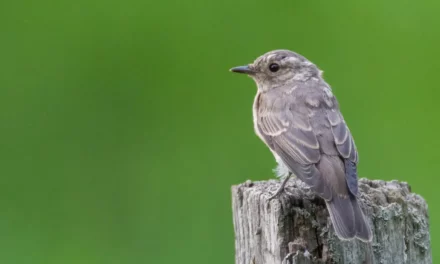What the Spotted Flycatcher looks like
The Spotted Flycatcher is a bird characterized by its elegant and understated plumage. Its body is adorned with shades of grey, offering natural camouflage. The head features dark grey stripes, adding to its distinctive appearance. The upper parts of its body are a grey-brown tone, blending beautifully with its environment, while the chest and flanks are light grey, delicately marked with faint stripes.
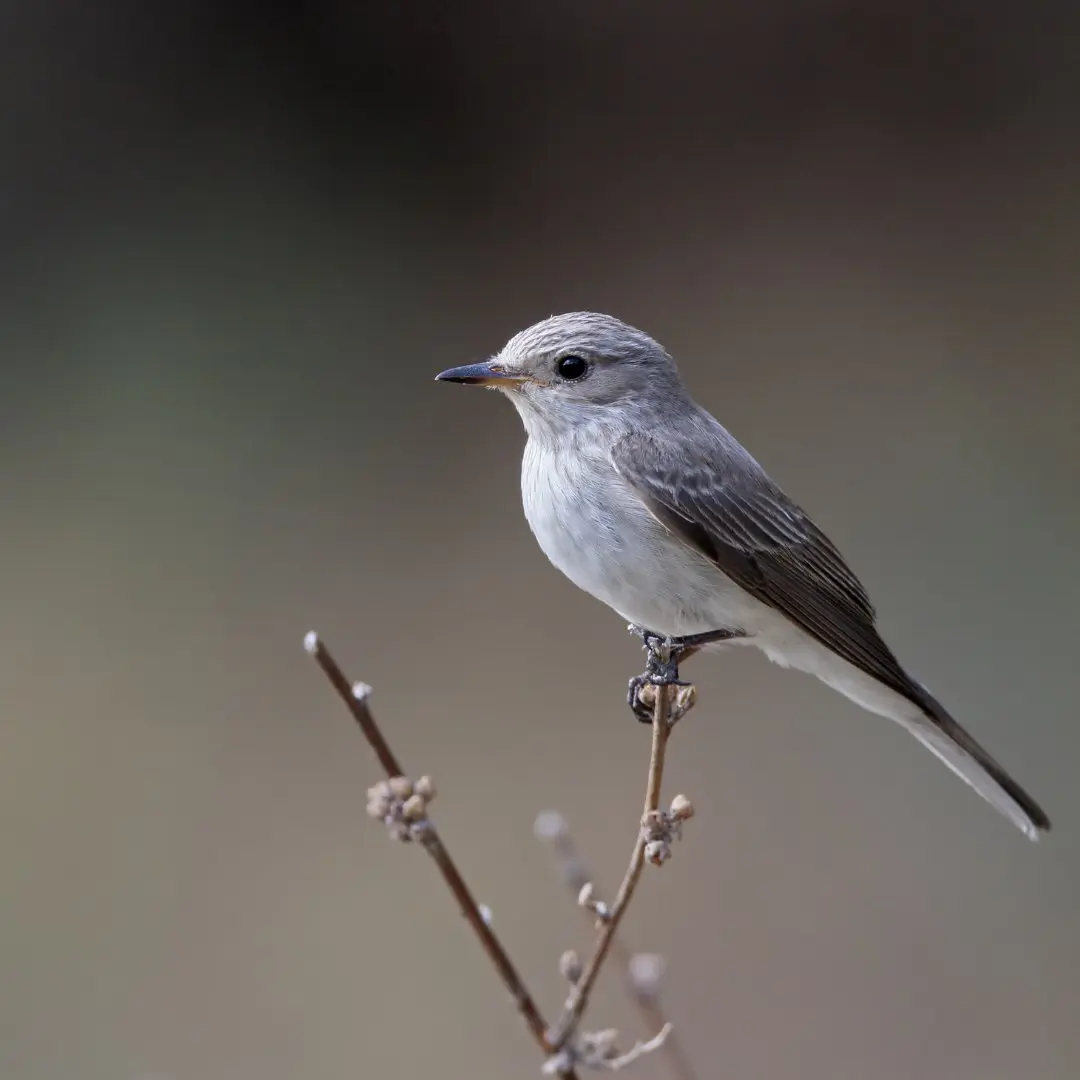
How the Spotted Flycatcher behaves
The Spotted Flycatcher is a highly skilled insect hunter. Despite its inconspicuous grey coloration, its behavior makes it noticeable. It uses agitated wing movements to capture prey mid-flight. Often, this bird perches in a strategic spot to watch its surroundings, chasing and catching flying insects before returning to its perch.
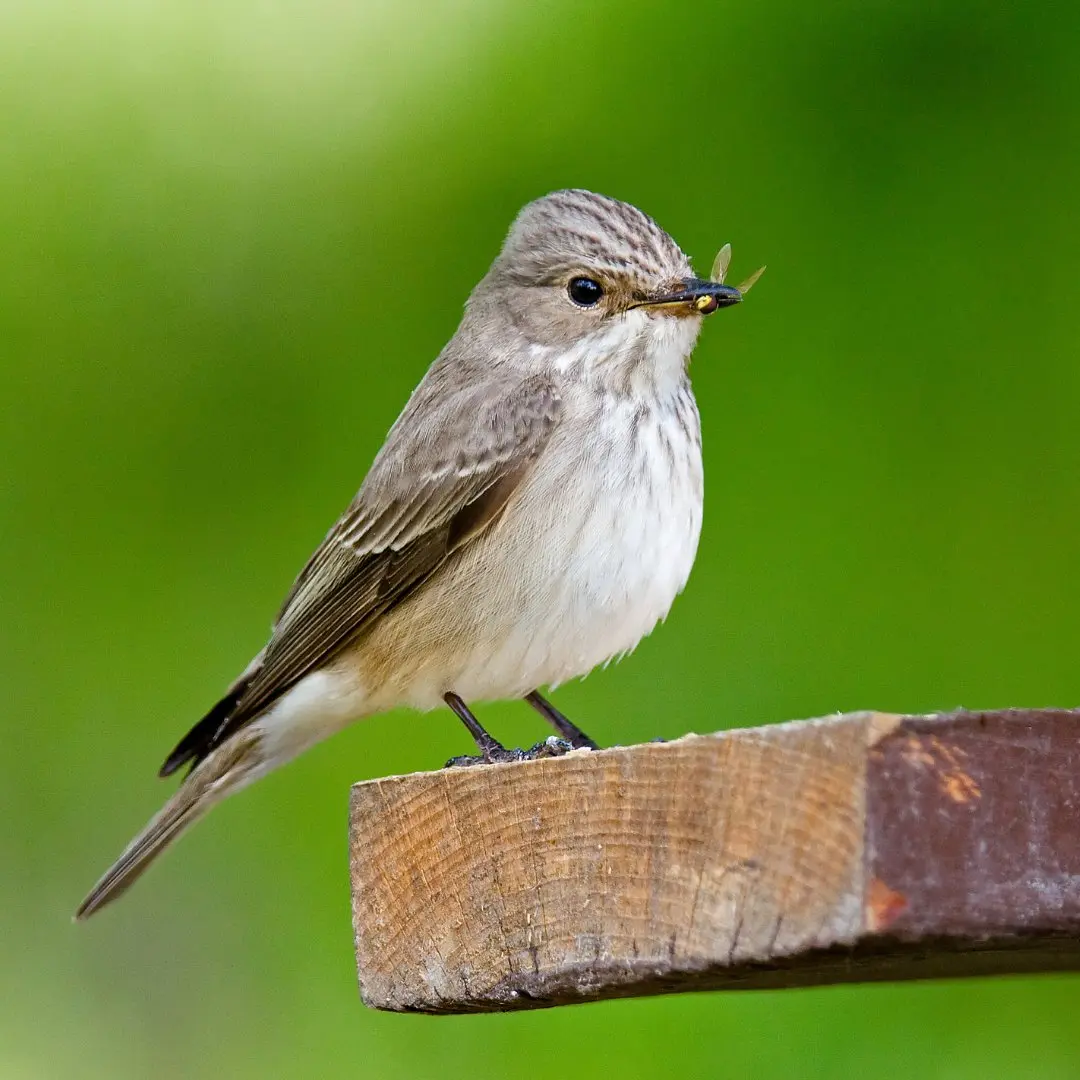
The Spotted Flycatcher's songs and calls
The Spotted Flycatcher produces high-pitched calls that are soft and subtle. Its typical call, a sharp and brief "tsit," is often heard in its habitat. Unlike other songbirds, its song is a gentle, repetitive chirp, lacking variation and melodiousness, yet it fits perfectly with its understated nature.
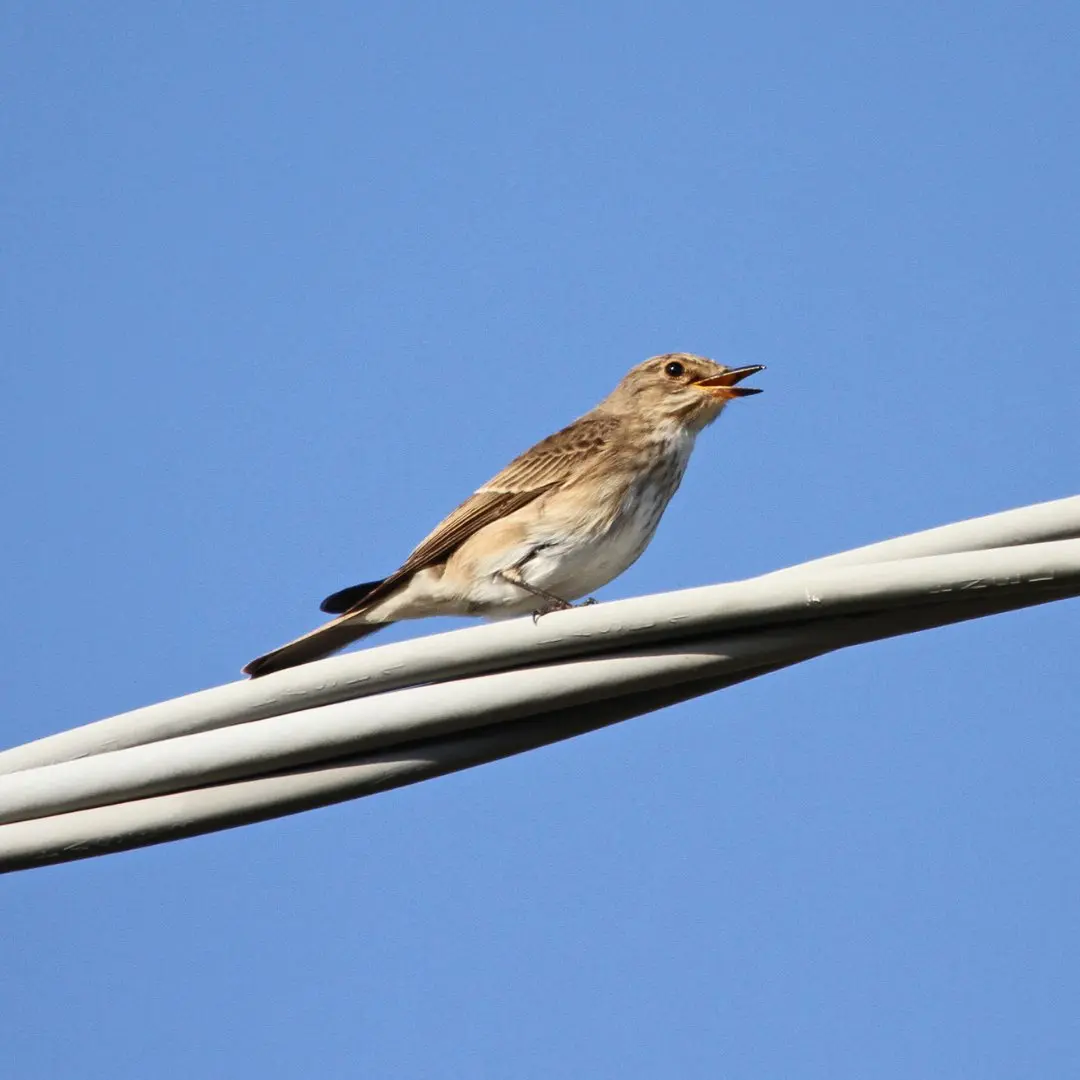
Breeding habits of the Spotted Flycatcher
The breeding season for the Spotted Flycatcher spans from May to August. It typically raises two broods per year, each containing 4 to 5 eggs. These eggs are light grey to brown, speckled with russet. The bird builds a cup-shaped nest made of twigs and moss, usually located in cavities or climbing plants like ivy.
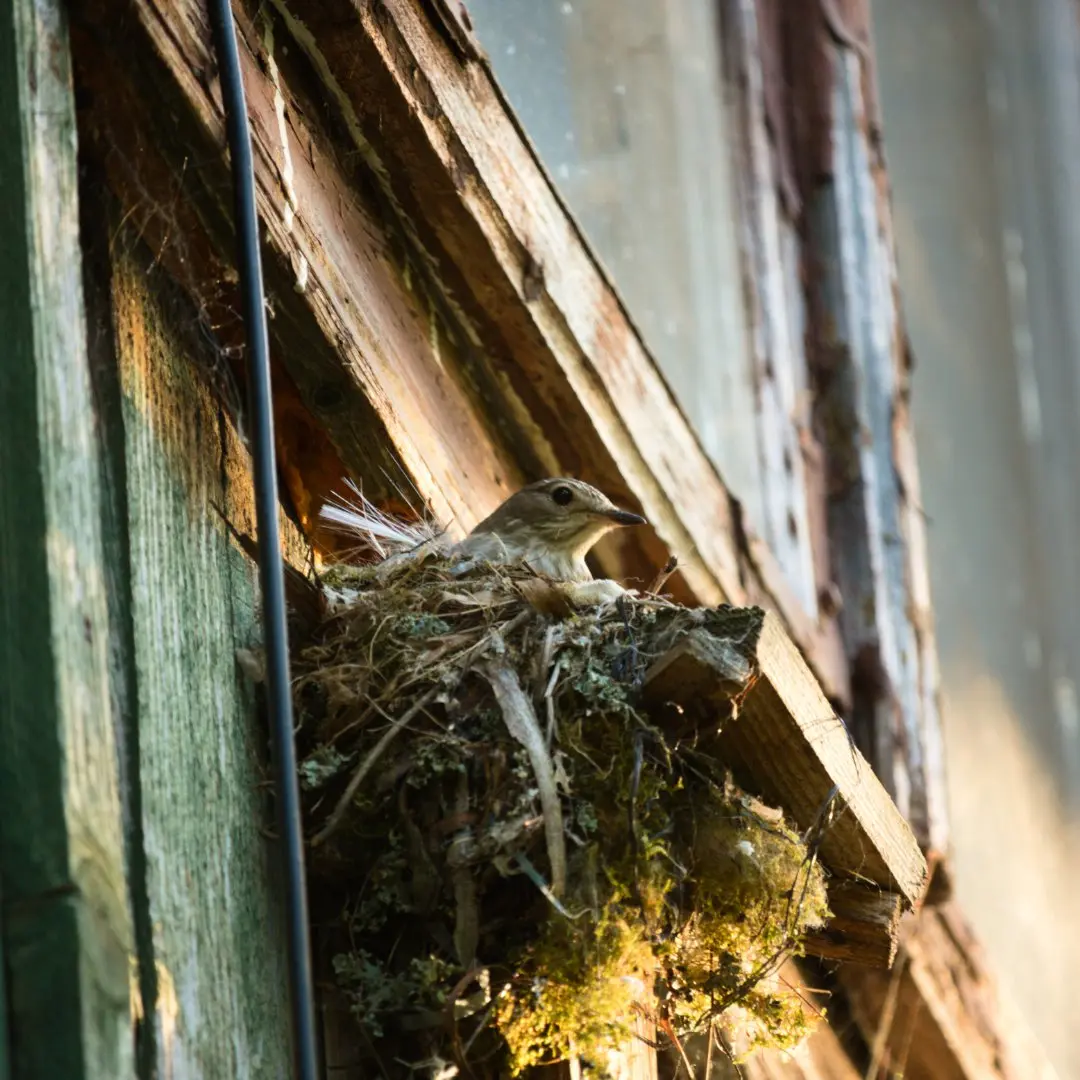
Diet of the Spotted Flycatcher
The Spotted Flycatcher primarily consumes flies and flying insects, catching them with remarkable agility. Prey such as wasps and bees are handled carefully, with the bird removing the stinger by tapping them on hard surfaces before swallowing. Occasionally, it supplements its diet with berries.
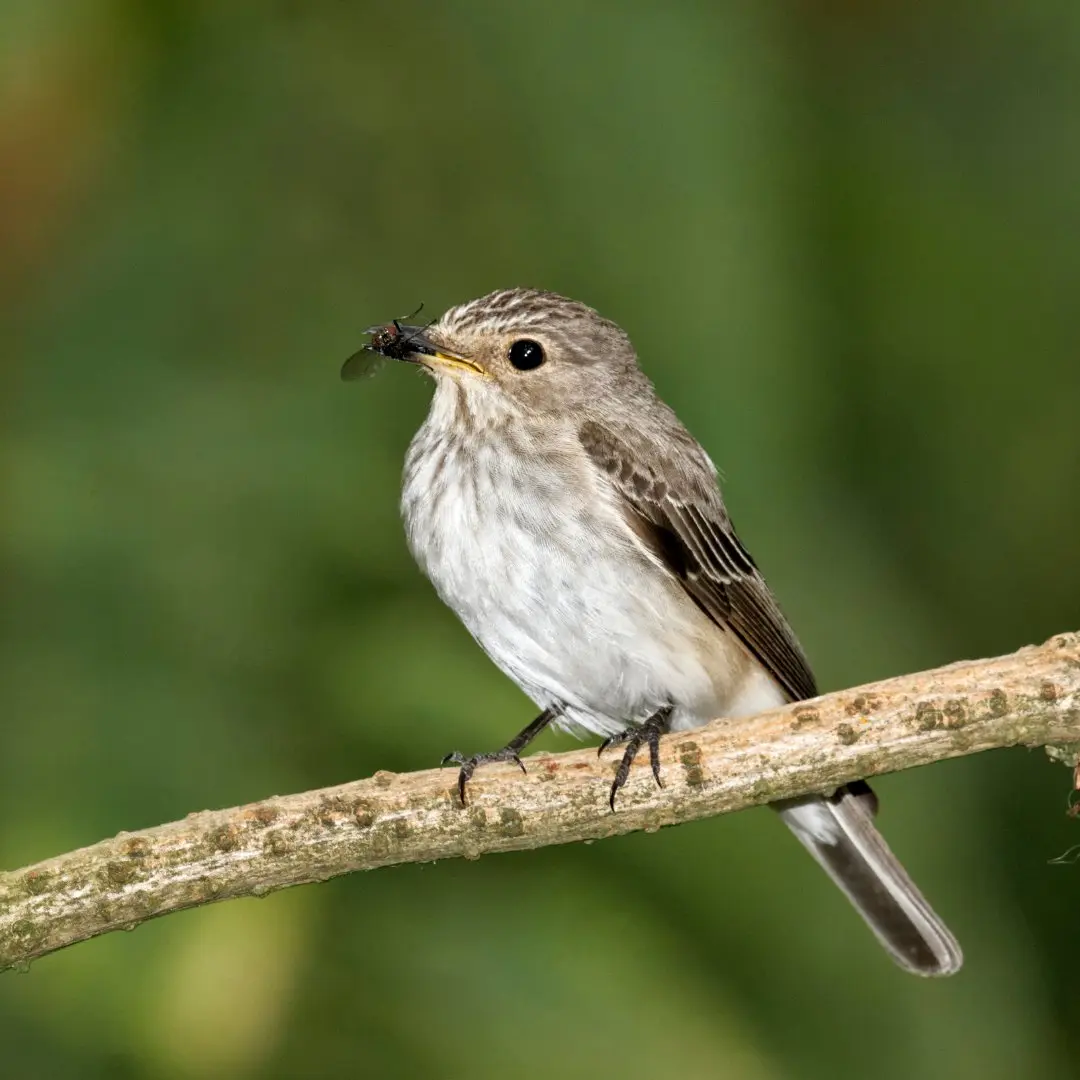
Habitat and distribution of the Spotted Flycatcher
The Spotted Flycatcher thrives in sparsely wooded areas, whether deciduous, coniferous, or mixed forests, provided there is space between trees for light to penetrate. It also frequents parks and gardens. Being a long-distance migrant, it travels to sub-Saharan Africa in September to find insects, returning in spring. However, its population is declining due to habitat loss and climate change.
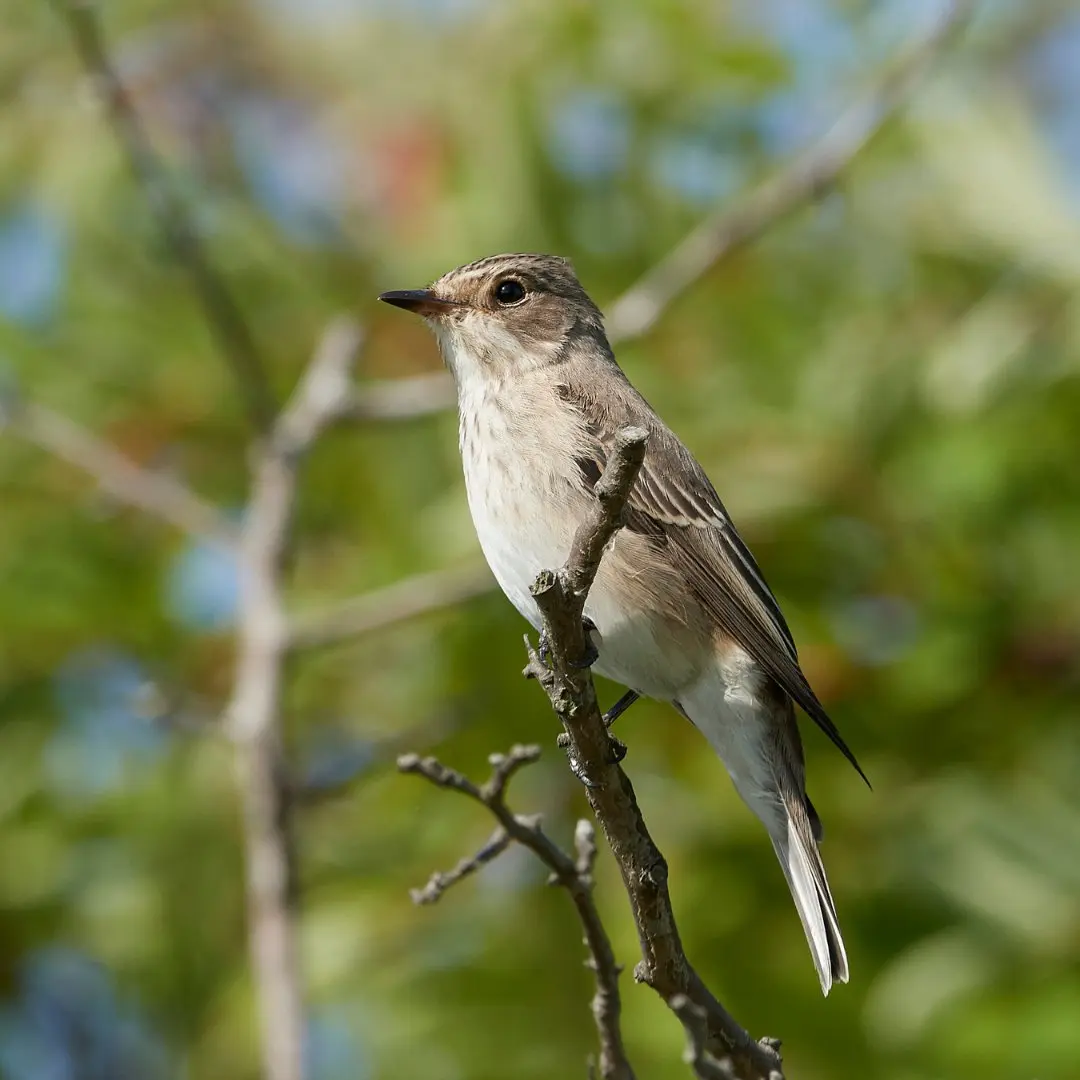
Conservation concerns
The Spotted Flycatcher faces significant threats due to pesticide use, loss of hedgerows, and increasing desertification during migration. These factors reduce its food sources and increase mortality rates. Conservation efforts, such as maintaining old orchards and reducing pesticide use, are critical for protecting this species.
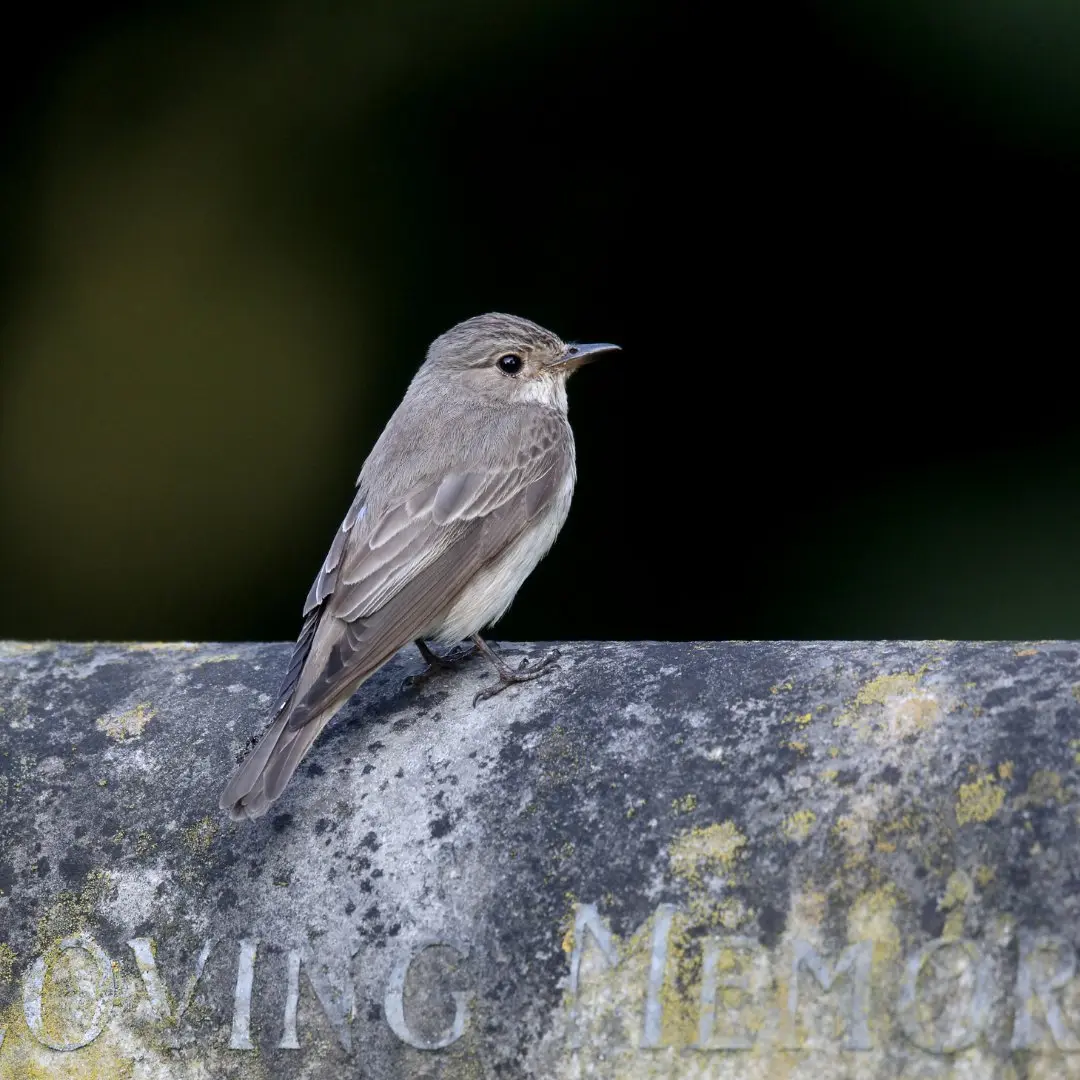
-


